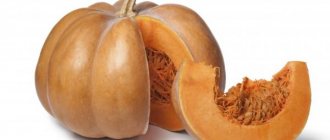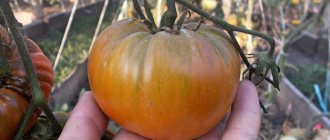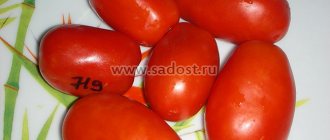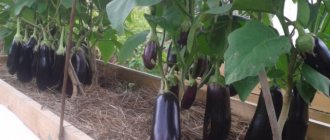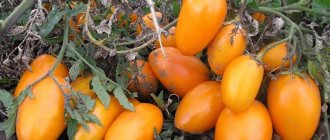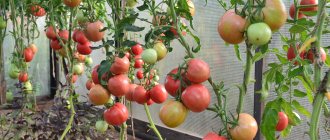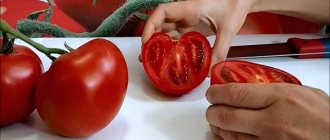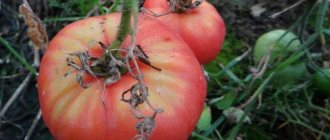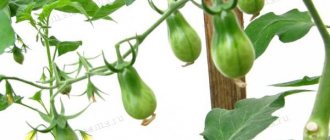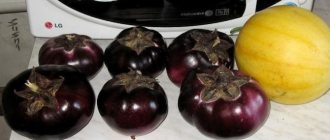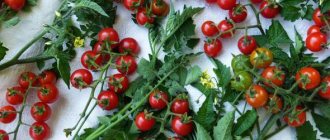- Features of obtaining seeds
There are a large number of varieties of garden strawberries and wild strawberries, but the most valued are the remontant, beardless varieties. Their advantage is that the bushes bear fruit throughout the growing season, and they can be grown not only on a personal plot, but also on a windowsill at home. Garden strawberry Alexandria is a popular and sought-after variety that can be grown from seeds.
Features of planting and growing strawberries Alexandria
To grow Alexandria strawberries, seedlings are purchased or grown independently from seeds. Propagation by seeds has a number of advantages: the resulting plants are not affected by nematodes, mites and viruses. Often, when buying seedlings at the market, you may not guess the variety, since sellers are not always conscientious.
In addition, purchasing seeds is economically profitable, and if you get them yourself, it’s completely free. It is better not to buy strawberry seedlings at the market, but to grow them yourself from seeds
Technique for obtaining seeds
From the most ripe berries, use a sharp knife to carefully cut off the surface layer of skin with a minimum amount of pulp. Lay out on a paper napkin to dry. After a few days, rub the dried pieces with your fingers, releasing the seeds. There is another way: thoroughly knead the ripe berries in a glass of water. In this case, the pulp floats, and the seeds remain at the bottom. The water with the remaining pulp is poured out, the seeds are decanted and dried.
Obtaining seedlings and planting strawberries
According to reviews, strawberry seeds quickly lose their viability, so it is recommended to start planting immediately after harvesting. However, many gardeners begin growing seedlings at the end of February or beginning of March, and receive the first berries in the same year.
Video: planting seeds
To obtain seedlings from seeds you need:
- Prepare nutrient soil.
- Buy a small plastic container and make holes in it for drainage.
- Fill the container with nutritious soil, compact and level it.
- Water the soil generously with a warm solution of Fitosporin.
- Place a thin white paper napkin, also watered with Fitosporin solution, or a layer of snow on the surface of the soil.
- Pour the seeds into a separate saucer and carefully spread them with a moistened toothpick over a napkin or snow.
A layer of snow should be distributed over the surface of the soil and seeds should be scattered on top - When using a napkin, you can pierce it in the places where the seeds will be planted. The main thing is not to bury them.
- Cover with a lid or film to reduce moisture evaporation, move to a bright place and wait for the first true leaves to appear in three or four weeks.
After 3–4 weeks, real leaves will appear on the sprouts - In the phase of 2–3 true leaves, separate the seedlings into pots or peat cups.
Strawberry seedlings should be picked at the stage of 2–3 true leaves.Recent postsPlanting grapes in the fall as an alternative to spring: what are the benefits? Technology for pruning cherries in the fall: diagrams and instructions for beginnersBeautiful maple tree in landscape design: 60 photos of successful application ideas
- At the beginning of May, pots with seedlings can be taken out into the fresh air for hardening, followed by planting in open ground.
Video: growing seedlings
Good lighting is the main condition for obtaining healthy, not elongated seedlings. To keep the seedlings strong, it is recommended to feed the seedlings after the third true leaf appears, using humus or other ready-made fertilizers. For example, Gumi-20M Rich, which, in addition to a complex of fertilizers, also contains Fitosporin, which effectively suppresses the development of fungal and bacterial plant diseases.
Gumi-20M Rich - a fertilizer containing macro- and microelements that provides complete nutrition for plants
Planting in open ground
To plant seedlings in open ground in May, clear a small area, add soil rich in fertilizers or rotted compost, which is sifted and leveled. Seedlings are planted at a short distance from each other for growing. Some gardeners cover seedlings with cut plastic bottles to reduce the stress of transplanting.
To ensure a good strawberry harvest, it is recommended to mulch the soil. There are two types of mulch: organic and inorganic. Organic mulch - rotted sawdust, peat, hay, pine needles. It fertilizes the soil well, but is short-lived. It has to be changed once or twice a season.
Organic mulch fertilizes the soil well, but is short-lived
Inorganic mulch - spunbond, polyethylene film. It is more durable, but does not improve the composition of the soil and, with excess moisture, can cause root rot. Its advantages include the fact that it retains moisture better, suppresses the growth of weeds, and the soil under such mulch warms up faster and retains heat.
When using inorganic mulch, strawberry seedlings are planted through cross-shaped cuts in the material
To plant in a permanent place you need:
- Prepare a bed 100–110 cm wide. Dig up the soil and level it.
- Regardless of the selected mulch, dig holes 25x25x25 cm in the garden bed at a distance of 30 cm from each other and 50 cm between rows.
- Water the holes and plant the seedlings, being careful not to bury the apical bud.
Strawberry seedlings should be planted at a distance of 30 cm from each other and 50 cm between rows - Cover with soil enriched with humus and mulch with rotted sawdust or dry peat.
If inorganic mulch was used, secure the edges of the material around the perimeter of the bed. The edges of the film need to be secured around the perimeter of the bed.
After planting seedlings in open ground, it is recommended to pick off the first flowers that appear so that the plants become stronger and take root better.
In most cases, by the end of summer you can taste the first harvest of berries. Strawberries of the Alexandria variety tolerate low temperatures well, so further care for them will not cause much trouble. It is recommended to replant the plantings every three years to obtain a stable, aromatic and healthy harvest.
Strawberry propagation Alexandria
The strawberry variety Alexandria reproduces:
- Seeds
- Dividing the bush
The first time the seeds are purchased at a flower shop. Seeds are sown in autumn, after harvesting, in the second half of winter or in spring.
How to sow seeds for seedlings:
- First they need to be stratified. The seeds are very small, and there are few of them in the bag. Therefore, it is difficult to distribute them evenly over the soil surface. Experienced gardeners advise spreading the seeds on a thin white napkin moistened with water using a toothpick. Then roll it up and hide it in the refrigerator for 2 weeks. They do not allow them to dry out, so they can be placed in a plastic bag without tying them tightly so that air can flow into them.
- During this time, loose nutrient soil is prepared. Mix 3 parts of leaf humus and garden soil. Add 0.5 parts of wood ash and part of sand. Grind, bake in the oven, freeze or disinfect with a warm solution of Fundazol.
- Prepare dishes with plenty of drainage holes. A drainage layer is placed at the bottom. Then take the napkin with the seeds out of the refrigerator, place it on the surface of the prepared dish, and water it. You can pierce the napkin in the places where the seeds are located with a toothpick. They hide them under paper, but do not bury them deep in the ground. Cover with glass so that moisture does not evaporate from the surface of the napkin longer.
You can first plant the seeds for seedlings, spreading them on a napkin or in the snow. Then place the dishes with them in the refrigerator or cellar. The snow melts, moisture sinks into the soil, and the seeds penetrate with it to a shallow depth. After 2 weeks, take it to a warm place. Maintain the room temperature at about 20°C. This method is more convenient because the seeds will remain in place and will not move during stratification. But it requires more space in the refrigerator.
Many gardeners grow strawberries without stratification, sowing seeds in the soil before winter. Lightly sprinkle with soil or level with a light rake. Such seeds undergo stratification under a layer of snow in winter. Alexandria strawberry seeds sown in the ground in the spring without stratification germinate the worst. It is difficult to maintain soil moisture for a long time. Seeds germinate at intervals of about a month.
Planting and care
Strawberry Alexandrina
To propagate crops, purchase ready-made seedlings or grow them yourself from seeds. Reproduction by seed has its advantages: the resulting planting material is not affected by viral, fungal and infectious diseases, and insects. It is not always possible to buy what you really need when purchasing seedlings at the market, since you may encounter an unscrupulous seller. In addition, purchasing seeds is much more profitable and cheaper, although you will have to wait longer for the first harvest.
Planting strawberries in the ground
Features of obtaining seeds
The ripest berries are collected and the upper part of the peel with a minimum amount of pulp is carefully cut off with a sharp knife. To dry, lay out the future planting material in one layer on a napkin. After a few days, the dried pieces are carefully rubbed with your fingers, releasing the seeds.
There is an alternative method: a ripe large berry is placed in a glass of water, where it is kneaded. In this case, the planting material will settle to the bottom, and the pulp will float to the surface. The water and pulp are drained, and the seeds are carefully washed and dried.
Growing seedlings and planting
Numerous reviews from gardeners indicate that seeds lose their viability soon after collection, so it is recommended to immediately plant them as seedlings. Many gardeners begin to grow it in the third ten days of February - the first ten days of March and harvest it in the same year.
Strawberry seedlings
To grow seedlings from seeds you will need:
- Prepare nutritious soil.
- Purchase a special plastic container and make holes in the bottom of the container to ensure drainage.
- Nutrient soil is spread evenly in the container.
- After this, the ground should be watered with a warm solution of phytosporin.
- It is also worth spreading a thin layer of white, loose paper napkin, generously moistened with the same preparation, on the soil surface.
- The planting material is poured into a separate container and carefully distributed over a napkin using a toothpick.
- In places where strawberries are planted, you can make holes in the napkin, but you cannot bury the seeds into the soil.
- To reduce moisture evaporation, cover the container with film or a lid; the container should be stored in a bright and warm place. If everything was done correctly, then in 3-4 weeks the first shoots will appear.
- When 2-3 full-fledged leaves are formed, the seedlings need to be transplanted into separate containers or peat cups.
- In spring, seedlings can be gradually taken out into fresh air for hardening, and then planted in open soil.
Important! The main condition for obtaining healthy and strong seedlings is abundant lighting.
To strengthen the seedlings, it is recommended not only to harden them, but also to fertilize them. After the formation of the third leaf, it is advisable to add humus or ready-made mineral fertilizers to the soil, for example, phytosporin, gum-20M. In addition to strengthening the seedlings, they disinfect the soil, preventing the development of fungal and infectious diseases.
Planting in open soil
To plant seedlings in open soil, you must first select and prepare a site. The place should be moderately lit, and the soil should be enriched with mineral and organic fertilizers. Seedlings are planted at intervals. Some gardeners first cover their plants with cut plastic bottles.
Strawberries
For abundant fruiting, it is necessary to regularly mulch the soil. There are several types of mulch:
- Inorganic - polyethylene film or spunbond. Durable material, but it does not enrich the soil composition and can lead to rotting of the root system. The main advantages of inorganic mulch are suppression of weed growth, moisture and heat retention.
- Organic - pine needles, rotted sawdust, hay and peat. The listed raw materials are short-lived, but well enrich the soil composition. During the growing season, the mulch layer will have to be renewed several times.
To land at a permanent place you will need:
- Build a bed, the width of which will be 100-110 cm. To do this, the soil will need to be dug up and leveled.
- It doesn’t matter what the mulch is, in any case you need to dig planting holes measuring 25*25*25 cm. An interval of 50 cm should be maintained between rows, and 30 cm between bushes.
- Fill the holes generously, lower the seedlings and cover with soil. The apical bud should be located above the ground surface.
- The final stage is mulching with organic or inorganic materials. If organic matter is preferred, it is better to use dry peat or sawdust. If inorganic materials are used, the edges of the material must be secured around the perimeter.
Characteristics of the variety
This is a remontant variety of small-fruited garden strawberries that does not produce runners.
In the state register of varieties, it is intended for cultivation in the Western Siberian district, which indicates its resistance to an unstable climate. The remontant beardless strawberry Alexandrina forms compact bushes up to 25 cm high with large leaves. Therefore, when planting seedlings in open ground, the distance between plants is maintained at least 20 cm.
The plant blooms in the first year after planting in mid-May. Fruiting begins in June and continues until October, as long as the temperature outside is positive. The fruits have an oblong shape, a bright scarlet color and a sweet and sour taste. Tasting score – 4 points. The first harvest is distinguished by the largest fruits. The weight of the berry reaches 8 g. The fruits stay on the bushes for a long time even after full ripening, darken and acquire even greater sweetness. Berries contain a lot of vitamin C.
Description of the strawberry variety Alexandrina:
- frost resistant;
- drought resistance is average;
- has strong immunity against pests and bacteria;
- susceptible to fungal diseases, especially in rainy summers.
In general, the variety is unpretentious, adapted to a variable climate and daily sudden temperature changes. To minimize the likelihood of plants being damaged by fungal diseases, follow the planting pattern and ensure good ventilation of the bed.
Description of the variety
Alexandria is a remontant strawberry variety with large and juicy fruits.
Bushes
Compact, semi-spreading bushes of Alexandria strawberries delight with their harvest throughout the warm season. Large serrated leaves give the plant a decorative appearance. Culture does not grow a mustache. Thin tall peduncles are topped with small snow-white flowers. From the second year of life, the plant produces up to 18-20 peduncles.
In addition to the Alexandria variety, there is a variety of Golden Alexandria strawberries, which is distinguished by higher yields, as well as large beautiful bushes, which are often used in landscape design
Berries
Alexandria's berries are fiery red, large enough for alpine strawberries (5-8 g). They have an oblong shape, a pointed crown, shiny skin and moderately pronounced seeds. The pulp is very sweet, with a characteristic strawberry flavor.
Productivity
The Alexandria strawberry bush produces its harvest in waves, from May to October. During the season, an average of 200-500 g of fruits are collected from a bush. The berries can be used fresh or processed into compotes and jams.
Alexandria is not the most flavorful strawberry. If you are looking for the aroma of wild forest strawberries, then pay attention to the Florica and Rosea varieties
How to care for strawberries Alexandria
Alexandria strawberries do not require special care. The main thing is to water it promptly and regularly. If there are ripe fruits on the bushes, watering should be done after harvesting so that the taste of the berries does not deteriorate. It is especially important during the growth of green mass and the appearance of the first flowers.
Loosening row spacing is necessary in the absence of mulch, which is well suited for:
- rotted sawdust;
- hay;
- straw.
Alexandria strawberries need to be fed several times a season. In early spring, immediately after the snow melts, the bed with bushes must be watered with a solution of urea or ammonium nitrate. To prepare it, you need to dilute a matchbox of fertilizer in a bucket of water. It is also permissible to use chicken manure or mullein at this time. You can scatter these products dry around the plant or prepare a solution.
Chicken manure should be diluted in a ratio of 1:20. This fertilizer can be used immediately after preparation. Mullein should be diluted in water in a ratio of 1:5 and allowed to brew for about 10 days. Before use, the resulting liquid must be diluted by half with water. You need to water strawberries with such liquid fertilizers at the rate of about 0.5 liters per bush.
Before the first flowers appear and during flowering, you can feed strawberries with a fertilizer such as Megafol. It includes:
- amino acids - 28%;
- nitrogen - 3% (including organic - 1%, amide - 2%);
- potassium - 8%;
- plant carbon – 9%.
To prepare a Megafol solution, you need to add 25-35 ml of fertilizer to a bucket of water. Strawberries are sprayed with the resulting composition at the rate of 0.2-0.3 ml of product per 1 m2. During the season you can do 2-3 such feedings.
Megafol can be fed to strawberries before flowers appear and during flowering
It is better to prune bushes of remontant strawberry Alexandria in the fall, when the last harvest is harvested. Carefully remove the lower leaves with pruning shears. It is important not to damage the growing point and the leaves that have not yet blossomed, which will become a full-fledged green mass next year.
If pruning was not possible in the fall, you can reschedule it until the spring. After the snow melts, you need to remove all diseased and dried leaves.
Golden
The unusual coloring is not the only thing that distinguishes this variety from others. The bright and rich taste of the berries is significantly superior to that of red-fruited berries. The berries are medium-sized, egg-shaped; the bushes do not form a mustache. The first shoots appear 2-3 weeks after sowing the seeds.
| Berry color | Berry weight (g) | Maturation (period) | Bush height (cm) |
| Creamy yellow | 8-11 | Beginning of June – end of October | 15-20 |
Description of the strawberry variety Alexandria and its characteristics
Alexandria is a remontant garden strawberry that does not form a mustache. It belongs to the alpine variety of berries, which means the formation of small fruits, high resistance to disease and winter hardiness. The bush can grow up to 20 cm in height.
This strawberry variety has bright green leaves that have a serrated edge and are folded in half in the center. During flowering, the plant is covered with small white flowers with rounded petals.
The size of the berries is small, about 8 g. They have a cone-shaped oblong shape. With a small fruit size, the yield from one bush is considered high, since this variety is classified as high-yielding. On average, about 400–500 g of aromatic, sweet and juicy berries are collected from one bush.
The remontant strawberry Alexandria has medium-sized but very aromatic berries
The Alexandria strawberry variety was first introduced in 1964 by one of the oldest and largest American mail-order seed companies, the Park Seed Company.
The variety bears fruit several times a year. In the southern regions, the harvest can be harvested from May to October. In colder climates, fruiting begins somewhat later (around mid-June) and usually ends in September. Fruit ripening is wave-like, that is, a large harvest alternates with single berries. This variety is frost-hardy and resistant to common strawberry diseases (gray rot, late blight and others). Reproduction occurs by seed, since the bush does not produce whiskers.
Fruiting of the bush lasts about 3–4 years. Then it needs to be rejuvenated by planting new plants from seeds or dividing the mother bush.
Since this strawberry variety is compact and does not grow tendrils, Alexandria is often grown on balconies and window sills.
The uses of this berry are varied:
- both small and adult connoisseurs of strawberries will happily eat it fresh;
- baked goods decorated with these fruits will delight you with both taste and appearance;
- Alexandria, prepared for future use in the form of jam, will long remind you of the sultry summer.
Advantages and disadvantages of the Alexandria variety
After analyzing reviews from gardeners and personal experience, we can highlight a number of advantages and disadvantages of this variety. First, I would like to note the advantages of Alexandria strawberries:
- high productivity;
- sweet and juicy pulp;
- good frost resistance (under a thick layer of snow, bushes can survive even 30-degree frosts);
- disease resistance.
With all its advantages, this strawberry also has a number of disadvantages, which include:
- capriciousness to climatic conditions and soil nutrition (in arid or insufficiently warm climates it can produce very small and sour fruits, and on poor soils have a worse taste than on fertile ones);
- poor tolerance to high temperatures and drought.
Alexandria is in some ways inferior to other varieties of alpine strawberries, but certainly not in taste.
Table: how does Alexandria differ from other popular varieties of alpine strawberries
| Name | Berry weight (g) | Berry color | Maturation (period) | Bush height (cm) | Peculiarities |
| Alexandria | 6–8 | Bright scarlet | End of May - mid October | 17–20 | Absence of whiskers, elongated berry shape, resistance to drought, frost, pests and diseases |
| Alpine giant | 15–20 | Red | End of May - mid October | 20–25 | Stable and high yield of berries already in the first year of sowing, frost resistance, resistance to major diseases and adverse environmental conditions |
| Ruyana | 5–7 | Bright red | Mid June - end of September | 15–17 | To form a strong bush in the first season, you need to remove the resulting flowers. The plant tolerates winter (even a long one) relatively easily and at the same time feels excellent even in the shade of garden trees and tree trunks. |
| White Lotus | 8–10 | White with yellow seeds | End of May - November | 15–20 | The variety is resistant to powdery mildew, gray rot, spotting and is powerless only against ants. The jam made from its berries resembles linden honey |
Description, advantages and reviews about the variety
Remontant strawberry Alexandria of Swiss selection. The variety was created in the 60s of the last century. Remontant strawberries are called strawberries with a long period of fruiting. This may be repeated formation of berries or periodic, when flower stalks do not appear all at once, but gradually. The advantage of this type of variety is the ability to enjoy the berries for a long time.
All varieties of strawberries can be divided into two groups according to the size of the berries:
- Large-fruited
- Small-fruited
According to the presence of whiskers, which are used for propagation of strawberries:
- Without a mustache
- With a mustache
Alexandria is classified as a small-fruited beardless species. The bush is relatively tall, up to 25 cm. The leaves are serrated, folded along the central vein. The plant does not form mustaches. The bush is dense, the peduncles are thin. The petals are white, small, rounded. Alexandria strawberries bear fruit from late spring to late autumn. The beginning of fruiting, depending on climatic conditions, occurs in May or June. The bush is productive; you can harvest about 4 hundred berries from it per season. They do not ripen constantly, but in waves. There are periods when you can only pick a few berries per day.
The fruits are red, small, glossy.
The average weight of one is about 4-8 g. They are oblong and differ from other varieties in their conical shape. Berries without a neck, pointed towards the top. The seeds are large and red. Gardeners who grow Alexandria strawberries testify that their fruits are tasty, although not the most aromatic. The variety is frost-resistant; its leaves are not afraid of low temperatures. The petals do not disappear when exposed to frost, but the center darkens. Such flowers do not bear fruit.
Reviews from gardeners claim that Alexandria strawberries are not damaged by any diseases. During periods of heavy rain, fruits that fall to the ground may rot. But they are not afraid of either gray rot or white and brown spots. The Alexandria variety is well suited for growing on balconies, hanging and combined flower beds, and even on a windowsill. It is not thickened with numerous tendrils with rosettes at the end of the shoot.
Landing
Planting dates for Alexandria are standard for remontant varieties. It is best to plant in the spring, as soon as the seedlings sown in containers in February-March have grown. The location is chosen in partial shade; the variety does not like direct sunlight. However, you shouldn’t plant it completely in the shade; if there is a lack of light, the berries will not pick up enough sugar. It has been noticed that the aroma of strawberries grown in the sun is brighter than those from bushes that grew in the shade. The soil must be enriched with a bucket of humus mixed with a glass of ash (per 1 m2).
It is optimal to make a strawberry bed in two lines, leaving an interval of 25-30 cm between the bushes, 0.5 m between the tapes. The holes must be immediately shed with water to shrink the soil. It is advisable to carefully cut off the first burst of flower stalks so that the seedlings spend energy only on rooting.
If you plan to grow Alexandria on the balcony, you will need containers of at least 12 cm in diameter. Be sure to arrange a drainage layer of about 3-4 cm made of expanded clay. It is necessary to provide a tray to drain excess water. Flowering strawberries are pollinated by hand with a brush.
Cultivation time for Alexandria in one place: 3-4 years.
In many characteristics, Alexandria strawberries are similar to another popular variety - Baron Solemacher
Features of cultivation
To get a good harvest of strawberries, you need to know the secrets of growing them.
When to plant strawberry seeds for seedlings
Seeds can be sown in January or February. Moreover, they take quite a long time to germinate, despite their small size.
Preparing seeds for planting begins 2-3 weeks earlier.
Stratification
To stratify seeds you will need:
- seeds;
- cotton pads;
- Plastic container;
- water;
- fridge.
The disk is soaked in water and the seeds are placed on it.
The second disk is also moistened with water and laid on top of the first. The seeds should be between two damp cotton pads. They are placed in a container that is tightly closed so that the moisture evaporates as slowly as possible. But do not forget that fresh air must flow to the seed, so small holes are made in the lid or wall. The containers should be kept warm for 2 days, then they are placed in the refrigerator on the top shelf and left there for 14 days.
All this time, the discs must be periodically soaked in water and the container must be ventilated.
Priming
For sowing strawberry seeds, loose and light soil with a sufficient amount of nutrients is suitable.
Advice! To make the soil more free-flowing, mix equal amounts of garden soil, forest soil and sand. After this, the soil mixture is disinfected in the oven for 20 minutes at 160 degrees.
After these procedures, the soil is left for 14 days in a dark place for beneficial bacteria to appear and multiply.
Sowing seeds
Sowing technology:
- The soil is poured into containers.
- It is compacted and watered abundantly.
- Seed material is laid out on the surface of the ground.
- They do not sprinkle it on top, but simply press it a little into the ground.
- The containers are covered with transparent lids or bags and left in a bright place. Small holes are made in advance in the lid to allow air to enter.
- The containers are left closed until shoots emerge.
As soon as the seeds germinate, the covers are removed. From this moment on, it is necessary to water the plantings regularly so that the soil does not dry out, otherwise the seeds may also dry out.
Important! Shoots may appear within a few months, the main thing is to wait.
You may be interested in: Planting strawberries with seeds for seedlings: how to choose seeds, soil, seed sowing technique and features of caring for seedlings
Useful information: Garden strawberries: growing from seeds with seedlings in open ground. Secrets of reproduction and care
Picking
When 3 true leaves appear on the seedlings, they are planted in a container measuring 5x5 cm. They can be peat or plastic, but strictly of this size. Before the procedure, holes are made in the bottom of the container and drainage is poured inside. Then pour soil of the same composition that was used when sowing the seeds.
Make a hole in the center and moisten it with a spray bottle. The seedling is carefully transferred to the pot, deepening it so that all the leaves are above the surface of the soil. The roots are covered with soil and watered well.
Hardening
Hardening off of seedlings begins 30 days before transplanting to a permanent location. First, the seedlings are taken out during the day for 1.5 hours on a glassed-in loggia, gradually increasing the time. In the end, the seedlings should be in such conditions from morning to evening, capturing part of the night.
Before transplanting, the soil on the site is loosened, fertilized and treated with antifungal agents.
Advice! Planting on a permanent site can be done from the end of April, if the nights are not too cold.
By the time of planting, the seedlings should be strong and have 8 or more leaves.
Growing technology
Alexandria can be planted in beds or containers and kept in windows.
How to plant strawberries in beds
When planting in a garden bed, a number of features are taken into account:
- width between beds 100 cm;
- the distance between bushes in a row is 50 cm;
- plantings are combined with garlic, which protects against slugs;
- the dimensions of the pits are 25-25 cm.
Water is poured into each hole, thoroughly moistening the soil. Fertilizers are applied. For their preparation the following composition is used:
- wood ash 400g;
- compost 1 bucket;
- vermicompost 2 l;
- water 10 l.
The roots are laid on a small mound. Distribute them evenly, making sure that they do not bend. The apical bud should be on the surface. But not too high.
Features of growing in pots
Alexandria is great for growing at home. On the windowsill in a beautiful flowerpot it will look luxurious and exotic. The volume of the container for planting should be 5-6 liters. The following must be placed on the bottom:
- drainage in the form of fine gravel;
- White sand.
The soil chosen is light, loose, rich in nutrients. A soil made from the following substances is ideal for it:
- peat;
- sawdust;
- turf;
- leafy soil.
Watering is carried out in moderation, without over-watering.
Growing Alexandrina strawberries from seeds
The main stages of growing high-quality strawberry seedlings of the Alexandrina variety from seeds:
- soaking seed;
- stratification;
- sowing in the ground;
- watering and ventilating seedlings;
- picking;
- hardening;
- transplanting into the ground.
Sowing seeds
For those who want to plant Alexandrina strawberries, growing from seeds is the best way. This is a beardless variety, so classic propagation using rosettes does not work here.
Seedlings are usually planted at the end of February or at the very beginning of March. Take the seeds and soak them for a few days. Some gardeners recommend using snow or rain water for this, which is much softer than tap water. Spread the soaked seeds in an even layer onto a substrate consisting of:
- turf (2 parts);
- peat (1 part);
- sand (1 part).
Heat the prepared substrate in the oven to remove harmful microorganisms and insect eggs.
You can use the “extreme seedling” option - pour the seeds not directly onto the substrate, but onto a previously laid snow bed (under no circumstances should you collect snow within the city). With this option, it is easy to determine the planting density and prevent unevenly filled areas. If desired, cover the top of the seeds with a pillow of snow.
Valentina Kravchenko, expert
Seed stratification
After pouring the seeds onto the substrate, place the container in the refrigerator for several days for stratification. Then cover with glass, cling film or a transparent plastic bag, and place in a bright and warm place for germination.
Do not place seedlings in direct sunlight! This will prevent the seedlings from growing.
Caring for strawberry seedlings
To ensure that the seedlings feel good, promptly remove accumulating condensation from the covering glass and water the substrate with clean water at room temperature. Use a pipette or spray bottle to avoid overwatering. Don't forget that the seedlings need to be ventilated!
When several leaves (3-4 pieces) appear on the sprouts, pick up the seedlings. Since the bushes are still small, use a wooden toothpick or any other thin object.
Be careful - strawberry sprouts are very fragile at this moment and can be easily damaged!
During a dive, some bushes may die. After replanting, water the plants so as to prevent drying out or waterlogging. During this period, harden the seedlings - place them in lower temperatures, in drafts, and so on. This is done so that when transplanted into open ground, the pampered strawberries do not die.
Care for the seedlings correctly, and then by the time they are transplanted into the garden, your bushes will be strong and healthy.
